- Silver is trading within consolidation zone between the $ 22.00-22.80 and $ 25.5 per ounce and is currently performing slightly better than gold, which remains in the downward trending channel
- Fed and the behavior of the dollar are crucial in the outlook for silver. However, next year should be positive - the Fed will provide easing, the dollar will be cheaper
- Seasonality is on the side of precious metals. Silver should rise at least until the 3rd week of January. Silver should perform best in the last week of December.
- The last quarter of this year in terms of demand from ETFs will be very flat, but definitely better than the same quarter last year.
- Positioning is also flat, silver is definitely not overbought ( investors may wait for some specific signal)
- Industrial metals are rising, which may further signal a decline in the gold / silver ratio. Currently, the ratio is still below the long-term average
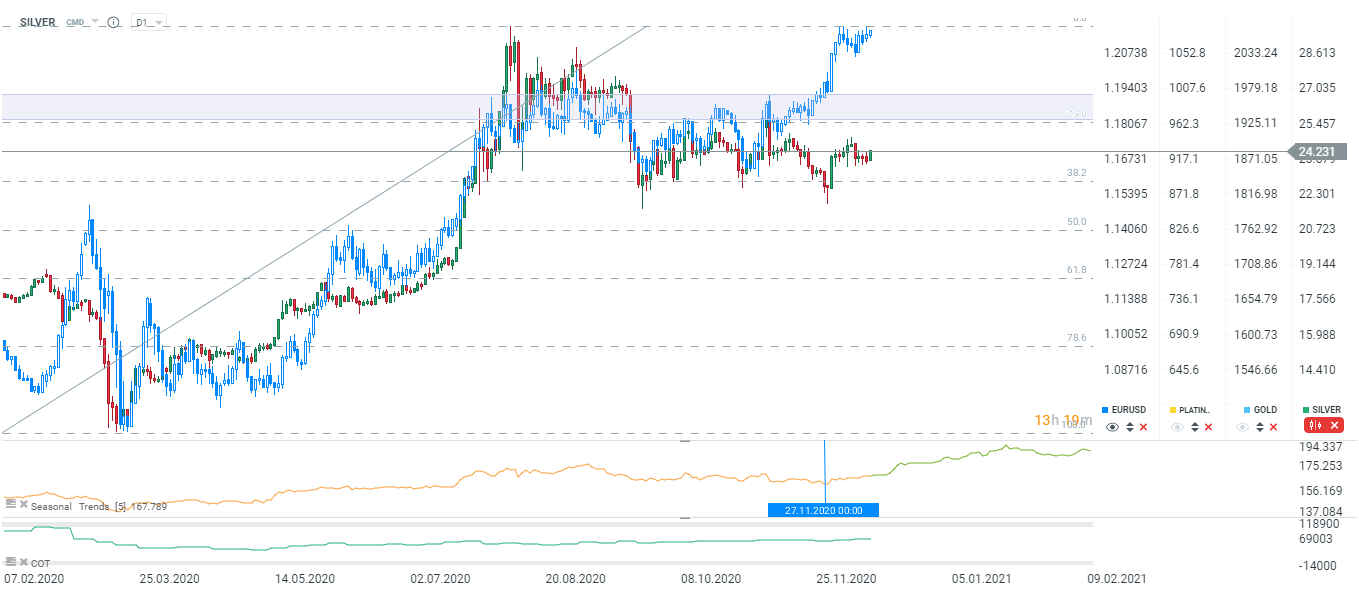 EURUSD will continue to be an important indicator for silver. Source: xStation5
EURUSD will continue to be an important indicator for silver. Source: xStation5
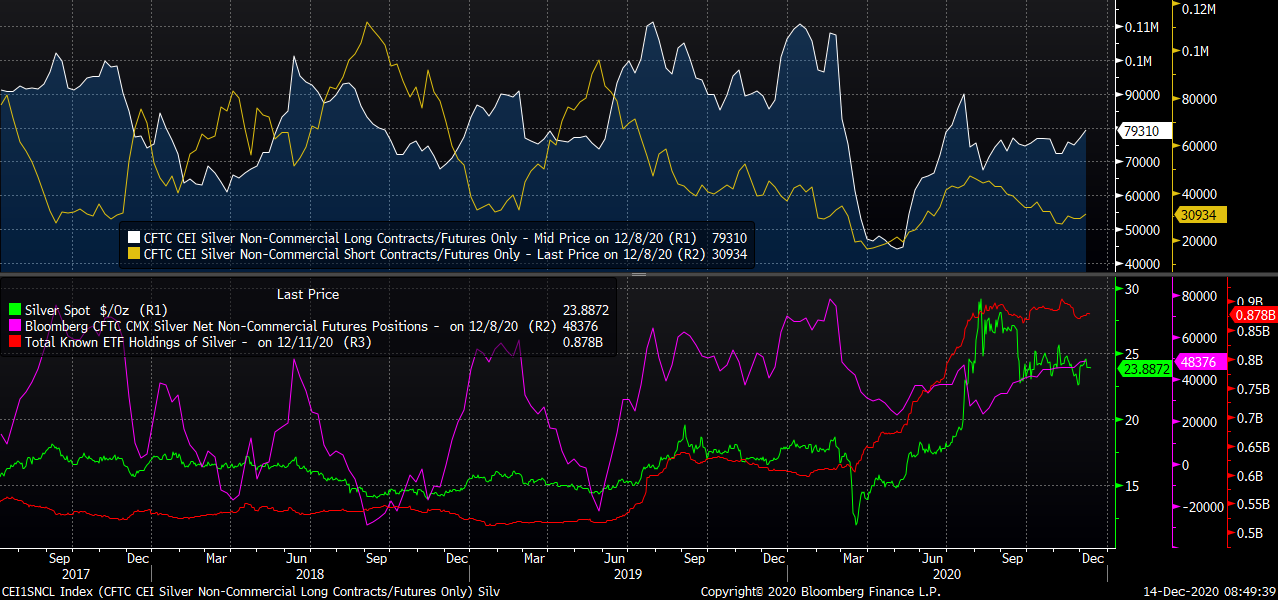 Demand from ETFs this quarter will be very low, but still better than last year's last quarter, when funds were shedding silver. Source: Bloomberg
Demand from ETFs this quarter will be very low, but still better than last year's last quarter, when funds were shedding silver. Source: Bloomberg
Start investing today or test a free demo
Create account Try a demo Download mobile app Download mobile app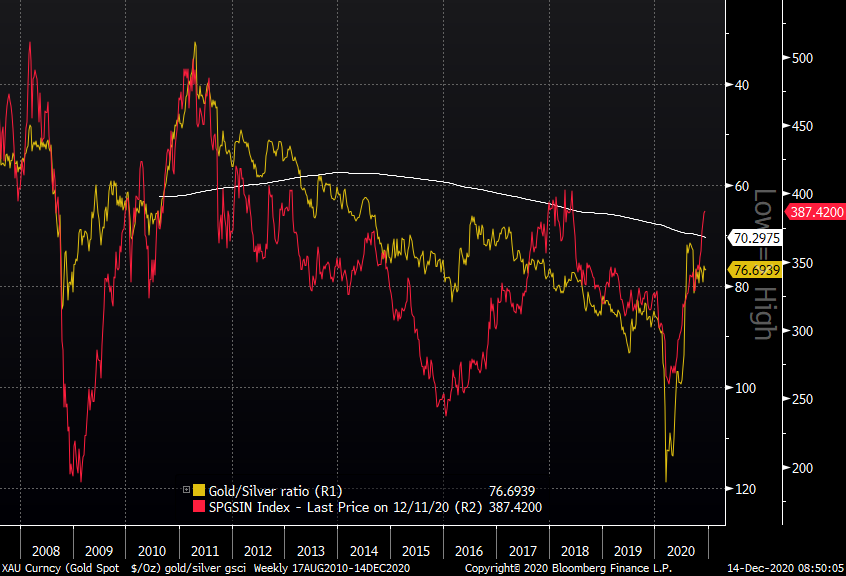 Gold - silver ratio is above its long-term average (reverse axis). The increasing price of industrial metals may give a signal for silver, which may have more room for growth next year. Source: Bloomberg
Gold - silver ratio is above its long-term average (reverse axis). The increasing price of industrial metals may give a signal for silver, which may have more room for growth next year. Source: Bloomberg
AUDUSD and iron ore
- The Australian dollar against the US dollar remains relatively strong, but these are still low levels when looking at the Aussie's behavior during the previous financial crisis
- If the industrial metals boom continues, AUDUSD may return to the0.80 level, i.e. the last local highs from 2017/2018
- Iron ore prices are at their highest levels since the beginning of the decade. China does not like such high price levels.
- According to China, such high price levels are unfounded by fundamental factors. China's iron ore inventories are not as low as, for example, copper inventories. However, steel production continues to grow strongly, along with the production of other refined metals such as aluminum and also copper
- Iron ore stocks recently reached their highest levels since mid-2019. On the other hand, in the middle of this year, ore stocks were at their lowest since 2016
- Forecasts indicate that China may expect GDP growth of up to 9% next year, which will support not only commodities, but also resource-based economies such as Australia
- Nevertheless, the warning factors for Aussie are the RBA, which offers opportunities for further easing and weak relations between Australia and China. Still, China has not imposed tariffs on iron ore
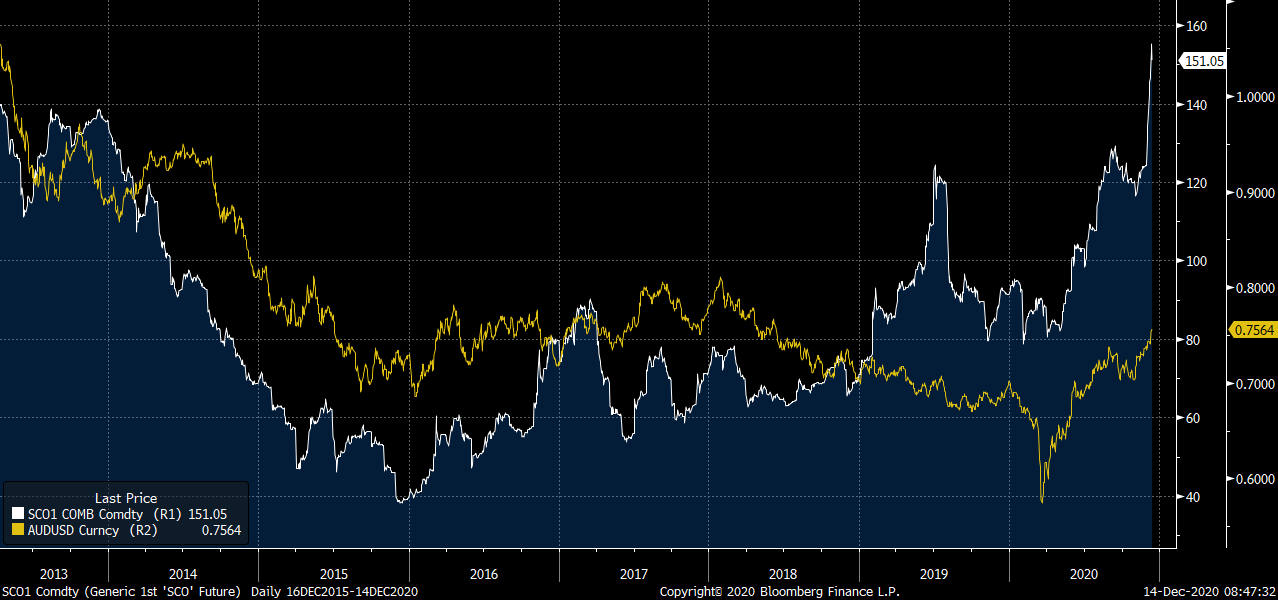 The price of iron ore is at its highest price levels since 2011. Source: Bloomberg
The price of iron ore is at its highest price levels since 2011. Source: Bloomberg
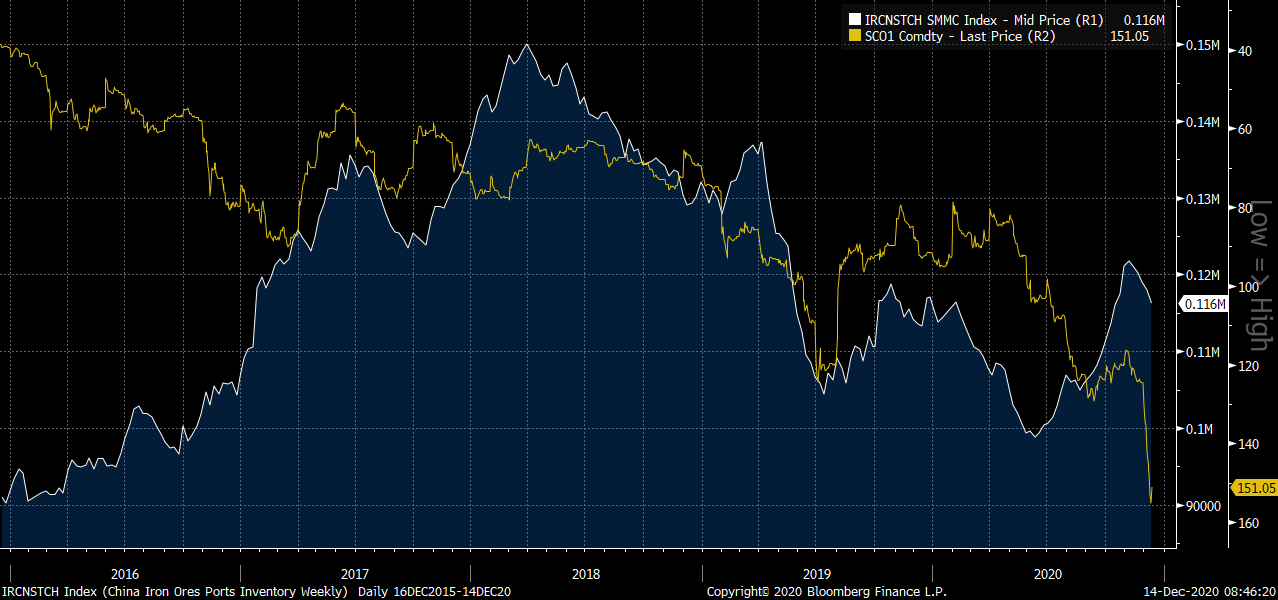 Iron ore inventories are not yet at a very low level, although they have reached multi-year lows this year. China cannot afford not to purchase ore from Australia. Source: Bloomberg
Iron ore inventories are not yet at a very low level, although they have reached multi-year lows this year. China cannot afford not to purchase ore from Australia. Source: Bloomberg
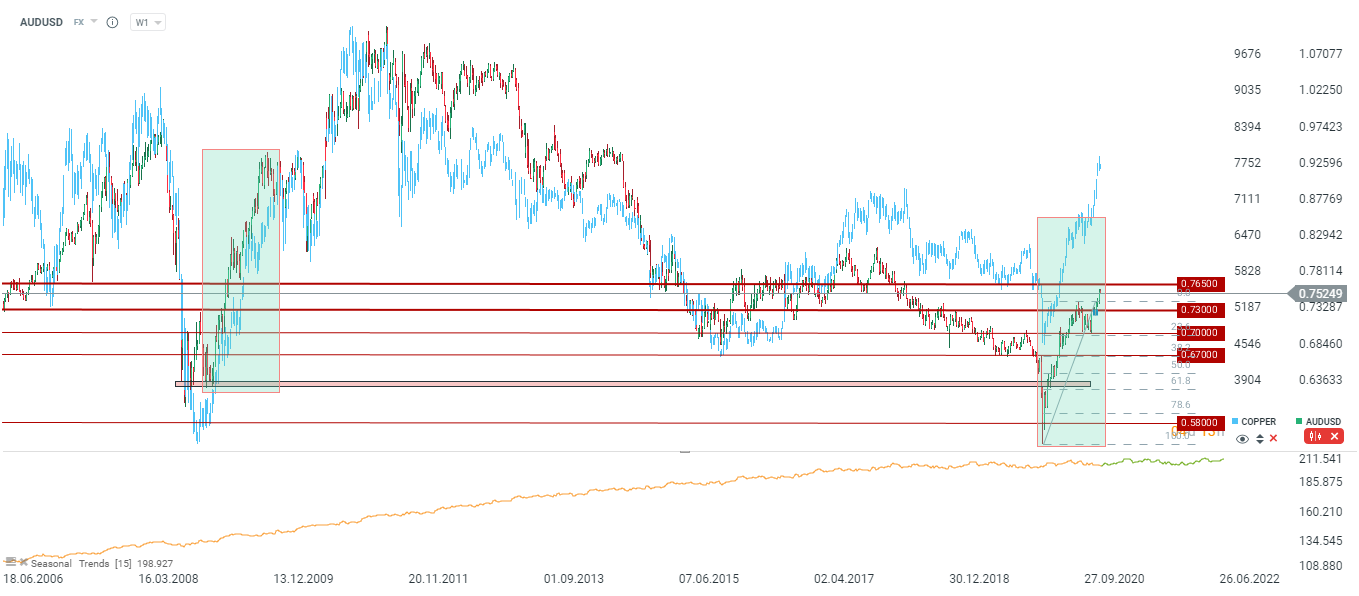 As history shows, Aussie may continue to move higher. Source: xStation5
As history shows, Aussie may continue to move higher. Source: xStation5
Oil:
- Further lockdowns of individual economies may negatively affect oil in the short term
- If full discipline is maintained by all OPEC members, based on Bloomberg's calculations, the implied decline in crude oil inventories is possible (although much smaller than it would be if the entire production cut was maintained at 7.7 million barrels per day)
- Brent is now struggling to break above the 61.8 retracement of the entire downward wave that started in late 2019/2020. Another strong resistance zone is located below the $60 per barrel, just before the 78.6 retracement
- Breaking out of the current uptrend may result in a stronger downward wave, but the improvement in the global situation next year should lead to a continuation of the upward trend
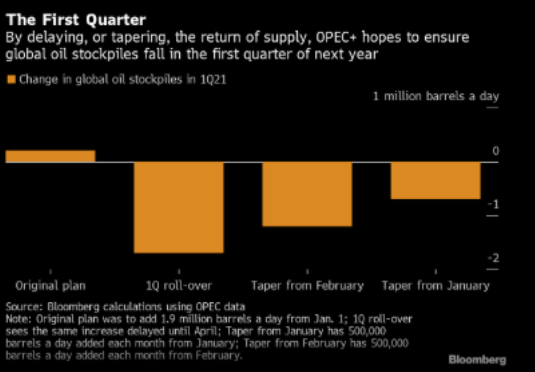 Bloomberg expects inventories to decline in the first quarter of next year. Source: Bloomberg
Bloomberg expects inventories to decline in the first quarter of next year. Source: Bloomberg
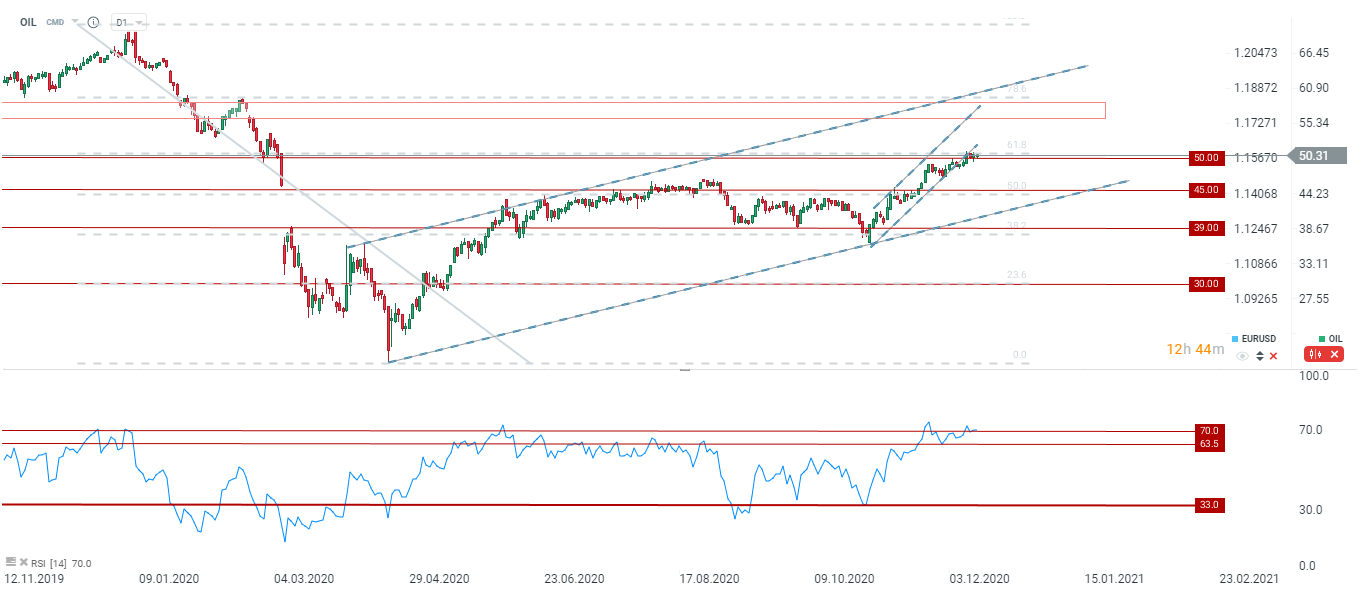 At the moment, price is struggling to break above the 61.8 retracement. The restrictions that are currently being imposed may lead to a contraction in demand in the short term. The possible correction, however, should not be large and should only reach the bottom limit of the large growth channel. Source: xStation5
At the moment, price is struggling to break above the 61.8 retracement. The restrictions that are currently being imposed may lead to a contraction in demand in the short term. The possible correction, however, should not be large and should only reach the bottom limit of the large growth channel. Source: xStation5
Natural gas:
- The price is consolidating after the recent rebound which has driven the price to around 2.65 per contract
- Forecasts in the US are rather mixed, pointing to lower temperatures now and higher in the coming weeks, which should support the idea of a seasonal price pullback
- The next 3 contracts do not differ much in price, the curve flattened earlier than expected, which is illustrated by the reduced demand for gas at the present time
- On the other hand, LNG prices are clearly rising
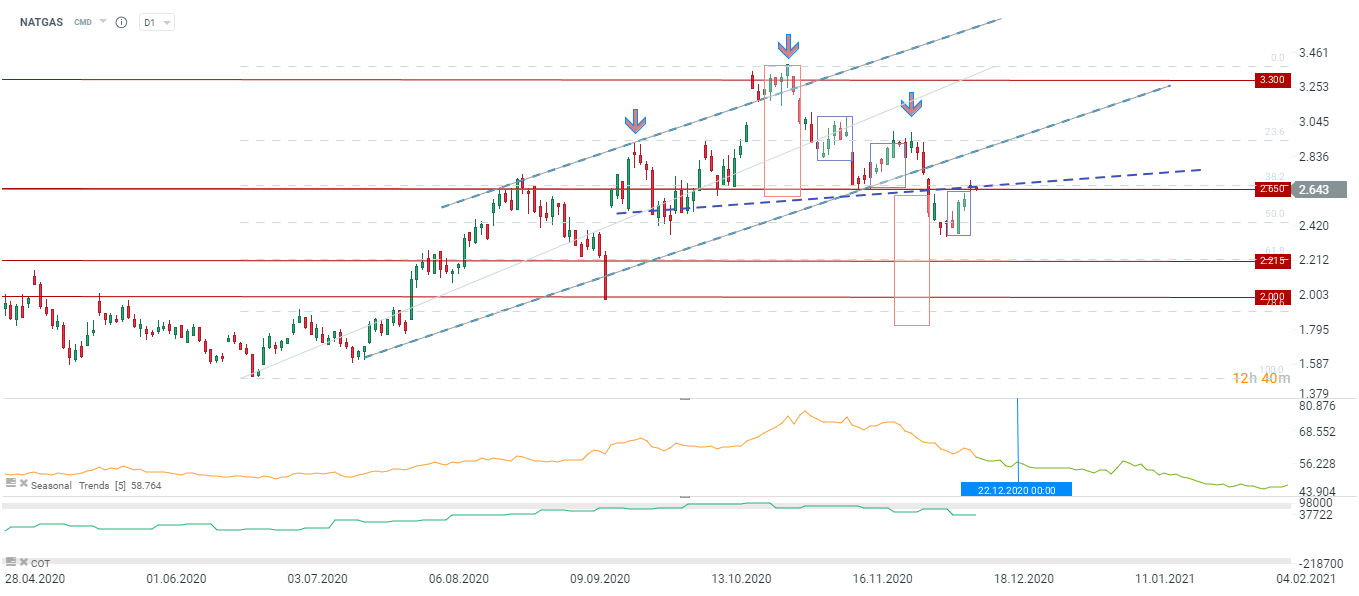 Gas price is trading in an important place. If the resistance zone at 2.65, which coincides with 38.2 retracement and the neckline of the head-to-shoulder formation is not broken, then the seasonality can be expected to continue. Source: xStation5
Gas price is trading in an important place. If the resistance zone at 2.65, which coincides with 38.2 retracement and the neckline of the head-to-shoulder formation is not broken, then the seasonality can be expected to continue. Source: xStation5
